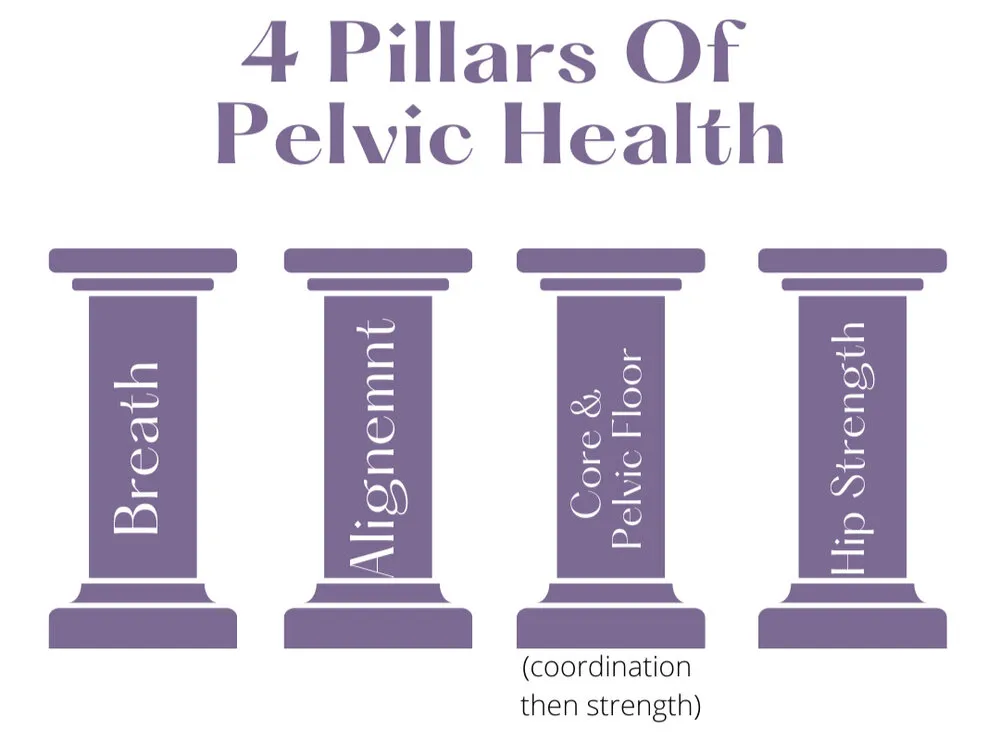Pelvic physical therapy is a new concept for most people, and there may be a LOT of questions one may have when it comes to seeking out the help of an expert that knows so much about this area of our health.
What does therapy look like?
How often does a person GO to this PT?
For HOW LONG do we go?
What will they be helping us work on besides KEGELS?
Let’s start with WHO we should see for pelvic health issues such as bladder leaks, pelvic pain, constipation, prenatal prep, postpartum recovery, gynecologic and abdominal surgery recovery, prolapse care, and more. A Pelvic Physical Therapist is firstly an orthopedic physical therapist who is able to assess and treat most all musculoskeletal issues from head to toe. They have specialized training (combination of many additional courses over years, fellowships, clinical training) to where they can also assess the pelvic floor and deep core muscles and are familiar with the many pelvic health issues that involve the musculoskeletal system.
Many of these physical therapists will have developed special populations or diagnoses within the pelvic health world that they have a greater interest or expertise in.
WHAT does therapy look like? I will start by saying that us pelvic PTs cringe when we hear that others have been told that we just do Kegels or biofeedback with our patients. Not true! A first visit STARTS with a full head to toe assessment. Because EVERYTHING IS CONNECTED! We will assess feet issues all the way to neck and jaw alignment or pain issues. And we will start to find out just what is all contributing to the issue our patient is seeing us for. And at Pinnacle, we talk to our patients about the 4 Pillars of Pelvic Health.
This includes 1) Breath 2) Alignment 3) Coordination then Strength of Core and Pelvic Floor 4) Hip Strength.

Breath is the cornerstone of core and pelvic floor muscle health. We will most definitely be working on this with every patient.
How the body aligns in a chair, while standing, and how we move around throughout the day will majorly influence how the entire body works and functions. Muscles are able to thrive when the body aligns well in both static and active times of the day. Imbalances in alignment can mean a muscle is unable to relax or is unable to contract well.
Coordination of the core and pelvic floor is queen. Without the muscles working well together as a TEAM, strength is irrelevant. Only AFTER they are coordinating well together, is it appropriate to work on strength. An example could be where a person’s pelvic floor muscles are really tight and are unable to relax or turn on with the other core muscles. Until these muscles can learn to relax and contract appropriately, strength exercises will likely make things worse for the person.
The final pillar is Hip Strength. The strength of the glutes is crucial so that the pelvis as a whole can be stabilized while we move throughout our day. Strong and well functioning glutes will make all the difference in pain free knees and hips, pelvic floor muscles that can activate appropriately, no back pain, reducing prolapse symptoms, and more.
A skilled pelvic PT will be able to create a program addressing all of these pillars in a way that is not overwhelming to their patient and can get them closer to resolving their pelvic health issue that is getting in their way of fully enjoying life.
Now for the How Often and for How Long question…
Therapy is broken down into 3 main phases.

Phase 1 is establishing the foundation of a healthy core and pelvic floor and body. The person is typically at a point where they don’t feel fully connected to their body, they may be in pain, and they are certainly having symptoms most days. Therapy will typically be once a week at this point and exercises will typically be focused on only 1 or 2 pillars at a time.
Phase 2 is the phase where the body is more connected and coordinated and pain and symptoms are becoming less but are not totally resolved. Exercises will be combining up to 2-3 pillars at once and we may be seeing the therapist every 1-2 weeks. It’s crucial at this phase that we don’t get so excited in the small wins or getting to this new place and being done with therapy when the body is still not far from a flare up. The big goal has not been reached and we have not yet built the resilience in the person’s body that they need for the long haul to keep feeling great.
Phase 3 is the final phase where we are working on fully returning to life activities or sport specific activities such as running, weight lifting, running after and lifting kids, or getting through a whole day and night without symptoms. Exercises should be combining all 4 pillars of pelvic and core health at this phase and coordinating things should feel more like a habit than a brand new skill. At this phase, depending on the particular person’s goals, visits will be anywhere from every 2-4 weeks. We need to be sure we are meeting just enough to keep the momentum going without feeling like we are restarting each visit.
Do we do biofeedback and kegel work?
Not really that much to be honest. There are actually so many layers to a healthy and fully functioning core and pelvic floor, that we end up doing so much more as can be seen with the 4 pillars. However, we DO have patients work on pelvic floor strength when it is appropriate, but as most people do more than lay in bed all day, pelvic floor strength exercises will quickly move to more active exercises in different postures such as sitting, standing, getting out of a chair, lifting weights and more. Strategies will be worked on with coughing and jumping that will involve how to best position the body and breath with the contraction of the pelvic floor.
If you hadn’t guessed it yet, most of the time, visits with one of our pelvic PTs will not involve an internal pelvic floor assessment or pelvic floor work. It will be necessary at times to reassess these muscles, but we certainly have much more to work on in an hour visit which goes by fast every single time!
We are absolutely obsessed with EMPOWERING our patients to feel and live their best. If you would like to chat with one of our PTs to help give you some guidance, answer questions, or see if pelvic PT is the solution for you, click the link below to get scheduled now.




